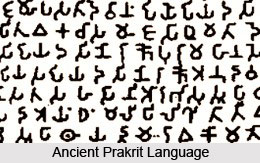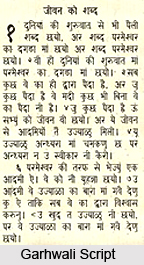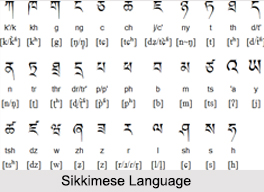 Assamese is the official language of the state of Assam in India. This language belongs to the easternmost group of Indo Aryan languages. Though Assamese language is mainly spoken in Assam, it is also used in several parts of the state of Arunachal Pradesh and some more North Eastern Indian states. Assamese language is basically found along the Brahmaputra valley.
Assamese is the official language of the state of Assam in India. This language belongs to the easternmost group of Indo Aryan languages. Though Assamese language is mainly spoken in Assam, it is also used in several parts of the state of Arunachal Pradesh and some more North Eastern Indian states. Assamese language is basically found along the Brahmaputra valley.
It is the easternmost native Indo-European language and is spoken by over 15 million native speakers. Its sister languages consist of Maithili, Oriya, Chittagonian, Sylheti, Angika, Bishnupriya, Rohingya and Chakma. It is written in Assamese script, from left to right, with a large number of typographic ligatures.
History of Assamese Language
The beginning of Assamese language is not comprehensible. Some suppose that it derived from "Kamarupi Prakrit" used in earliest "Kamarupa" Kingdom. On the other hand, it is believed that Assamese language developed at least before 7th century CE from the middle Indo-Aryan Magadhi Prakrit, but in some ways more ancient than Vedic Sanskrit with other Eastern Indo-Aryan languages.The earliest forms of Assamese in literature are found in the ninth-century Buddhist verses called "Charyapada". In the late 13th century AD, Hema Saraswati, one of the oldest Assamese writers, wrote the very popular `Prahlada Charita`. Another renowned figure of Assamese literature was "Madhava Kandali".
Assamese literature
The prominent works in Assamese literature include "Giti Ramayana", several poems and songs, etc. It was followed by a generation of novelists, writers and poets like Rajanikanta Bardaloi (1867-1939), Chandra Kumar Agarwala (1867-1938), Padmanath Gohain Baruwa (1871-1946), Hiteshwar Bezbarua (1871-1931), Benudhar Raj Khowa (1872-1935) and many more. Moreover several contemporary writers like Raghunath Chaudhari also wrote generously at the age of social reforms and nationalism. From the 15th and 16th centuries, songs like "Borgeets", dramas like "Ankiya Naat" and the first prose writings (by Bhattadeva) were created. The fictional language, based on the western dialects of Assam moved to the court of the "Ahom" kingdom in the 17th century, where it became the state language. This period saw the well-known development of identical prose infused with spoken forms in "Buranjis".
 Magadhan and Gauda-Kamarupa period: Ancient Assamese literature was found in Buddhist verses called Charyapada during the 9th century. It was a period when the Prakrit was at the cusp of differentiating into regional languages. Folk music of Assam called "Deh-Bicarar Git" has preserved the spirit and expressiveness of the Charyadas even today.
Magadhan and Gauda-Kamarupa period: Ancient Assamese literature was found in Buddhist verses called Charyapada during the 9th century. It was a period when the Prakrit was at the cusp of differentiating into regional languages. Folk music of Assam called "Deh-Bicarar Git" has preserved the spirit and expressiveness of the Charyadas even today.
Early stage: During the 13th Century, a distinct style of Assamese literary form arrived in court of the Kamata kingdom. A remarkable example of this evolution is the poem "Prahrada Carita" composed by Hema Sarasvati. Madhava Kandali translated the Ramayana into Assamese during the 14th century and named it "Saptakanda Ramayana." These works from early phase of Assamese literature shows individualized idioms, archaic forms, and conjunctive particles.
Middle stage: Assamese language made way to the Ahom kingdom during the 17th century and eventually gained the status of state language. During this time many Bodo-Kachari people were converted and from them emerged several new Assamese speakers who were previously Tibeto-Burman language speakers. This period witnessed different styles of secular prose and religious biographies across topics.
Modern stage: Printing—the publication of the Assamese Bible in 1813 from the Serampore Mission Press marked the beginning of the modern phase in Assamese literature. After the East India Company took complete control of Assam in 1836, many officials from Bengal were transferred to administrative position, offices, schools, and courts. Earlier the British had insisted on the development of Bengali language as a replacement of Persian, the official language of Mughal India. Now they promoted Bengali in administrative centers across Assam and maintained that Assamese was a dialect of Bengali. This heavily impacted the style of Assamese literature.
Standardization of Assamese language
Hemchandra Barua worked independently to provide an etymological orthography and his etymological dictionary, “Hemkoshâ€, was published posthumously. He rendered Sanskritised approach to Assamese in his “Asamiya Bhaxar Byakaran†which is considered the "Grammar of the Assamese Language". Barua`s approach to Assamese language and literature was adopted by the Oxomiya Bhaxa Unnati Xadhini Xobha that later became Assamese Language Development Society. This approach, led by Lakshminath Bezbaroa was spread across Kolkata among Assamese students led. The Society published a periodical Jonaki and the period of its publication, Jonaki era, saw spirited negotiations on language standardization.
Geographical Distribution of Assamese Language
Assamese Language is indigenous to Assam and is also spoken in states of Arunachal Pradesh and Nagaland. Existence of Assamese script can be found in Rakhine state of present Myanmar. There are also important Assamese-speaking communities in Australia, Dubai, the United Kingdom, Canada and the United States. Assamese is the official language of Assam, and one of the 23 official languages recognised by the Republic of India.
Regional dialects of Assamese Language
Assamese language has quite a few regional variations such as Eastern and Western dialects. The astern dialect is homogeneous and is prevalent to the eastern side of Guwahati whereas the western dialect is heterogeneous. According to linguistics Assamese can be categories in four dialects given below.
Eastern group: In and around the undivided Sivasagar district and the former undivided Lakhimpur district. Standard Assamese is based on the Eastern group.
Central group: It is mainly spoken in Nagaon, Sonitpur, Morigaon districts and adjoining areas
Kamrupi group: Mainly found in the Kamrup region
Goalpariya group: This dialect is prevalent in the Goalpara region
Writing System of Assamese Language
The Assamese language makes usage of the Assamese script that is a variant of eastern Nagari script. The Assamese script traces its roots from the Gupta script. The writing style of Assamese language is very unique. It directly resembles the Mithilakshar script of the Maithili language, with the Bengali script. Assam had its individual system of writing on the bark of the "saanchi" tree in which spiritual texts and chronicles were written. The contemporary spellings in Assamese are not essentially phonetic. "Hemkosh" is the second Assamese dictionary, introduced spellings based on Sanskrit language.
Assamese literature of contemporary times is more popular because of a particular genre of vibrant short-stories. The present generation of some well-known writers includes Harendra Kumar Bhuyan, Arupa Patangia Kalita, Phul Goswami, Indira Goswami and Manoj Kumar Goswami.



















